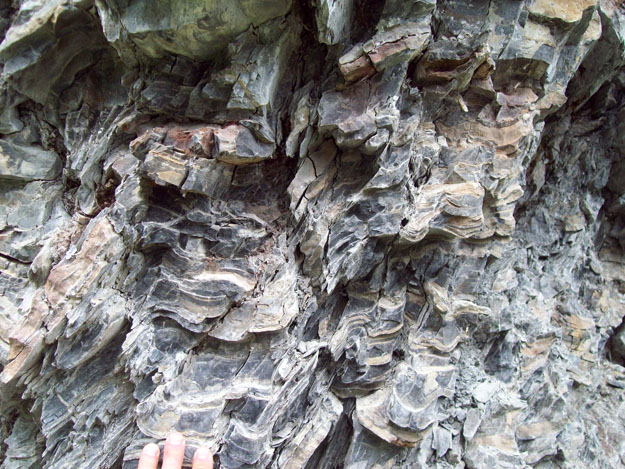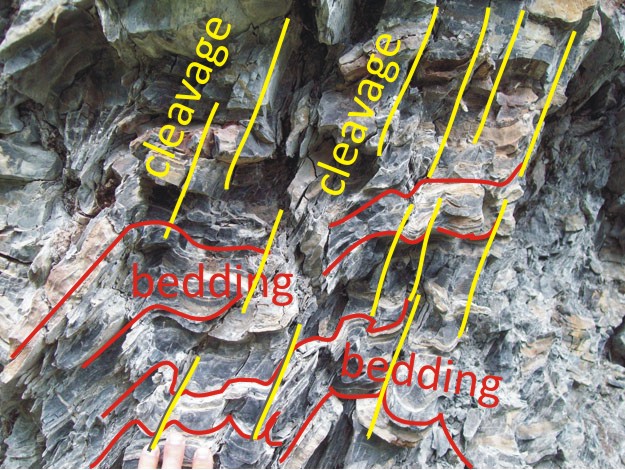This summer, a week or two after our wedding, my wife and I found ourselves in the Canadian Rockies for a pre-honeymoon. Part of our time was spent on a backpacking trip to Floe Lake in Kootenay National Park, British Columbia. On our hike in, we passed this outcrop of Chancellor Slate, a Cambrian aged deposit of mud which got deformed during the compressional mountain building event that thrust up the Canadian Rockies.

The original sedimentary layering has been shortened horizontally, and has undergone pressure solution and small scale folding that resemble a bigger version of what you see in this photomicrograph. See: the bedding is crumpling up into tight crenulations, and with a little more bedding-parallel shortening, we would expect to see the obliteration of all traces of the bedding, and the resulting rock would be a true slate.

As it is now, this rock is transitional between a purely sedimentary rock (shale, which splits along the bedding plane), and a purely metamorphic rock (slate, which splits along the cleavage plane). The folded beds show us this.
Here’s another look, with some 3D relief to it:

Happy Friday. Have a good weekend.

0 thoughts on “Friday fold: cleaved slate in Kootenay National Park”